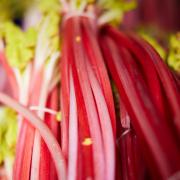How an East Yorkshire farm is encouraging us all to be giddy about goats’ milk

Goats always look slightly bonkers. Oh, come on, we’re all friends here, we can be honest about these things. There’s something about their protruding, wild eyes, their tufty, tatty beards and their daft little horns that make them look a bit doolally.
But don’t let their crazy ways fool you – these are important beasties playing an increasingly significant role in our daily diets.
Many people are now turning away from traditional cows’ milk and seeking out alternatives such as soya, almond, oat, rice and coconut. In recent years, goats’ milk has emerged as a popular option as it is nutritionally close to cows’ milk but has less of an impact on digestion and gut health. Anecdotally, people have reported drastic reductions in eczema, asthma, bloating, constipation, catarrh and digestive discomfort after swapping from cow to goat products.
St Helen’s Farm in Seaton Ross is Britain’s leading goats’ milk producer with more than 30 years’ experience. The farm began in Barmby on the Marsh in 1986 alongside St Helen’s Church (hence the name) with around 500 goats. They began by supplying Waitrose and Hillards with a blend of sheep and goats’ milk yogurts, but the business soon took off and they moved to their current site in the Vale of York in the early 1990s.
They built a modern dairy, which meant they could pack fresh goats’ milk into cartons and make a range of other products like butter, cream, ice cream and cheese, and now supply supermarkets across the country on a daily basis, with extra milk supply from other farms in Yorkshire and the Midlands.
‘There have been many changes over the years but a consistent focus on good animal welfare and attention to quality at all stages of the process has remained our constant philosophy,’ said marketing manager Cornelia Wernhart. ‘This has enabled the farm and dairy to produce a top-quality goats’ milk that continues to be enjoyed by increasing numbers of customers each year.’
So, why are so many people making the switch from cows’ to goats’ milk? If the flavour and nutritional profile are so similar, why bother?
‘Goats’ milk has many valuable attributes which can benefit your gut health and overall wellbeing,’ said Cornelia. ‘It’s gentler on the stomach as it contains different proteins and smaller fat particles that are easy to digest, often leading to people reporting improvements in digestive and intolerance problems.
‘Goats’ milk also has more oligosaccharides (non-digestible carbohydrates) than cows’ milk. These act as prebiotics in the gut and can help to maintain the health of the digestive tract and gut microbiome by encouraging the growth of beneficial gut bacteria. ‘It goes without saying too, of course, that light and creamy goats’ milk tastes fantastic in hot drinks, on cereals and in a wide range of recipes.’
For more information, nutritional advice and recipes, visit sthelensfarm.co.uk.



























